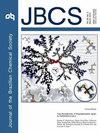The Use of Single Crystal X-Ray Diffraction Technique for Characterization of 25I-NBOMe and 25R-NBOH (R = Cl, I, Br, Et) in Forensic Application
IF 1.3
4区 化学
Q3 CHEMISTRY, MULTIDISCIPLINARY
引用次数: 0
Abstract
Criminal minds create new psychoactive substances (NPS) to dribble the Drug Regulatory System. Early Warning Systems (EWA) were instituted worldwide to combat this practice. Brazilian government has started establishing EWA at a national level since August 2021. The role of drug analysis laboratories in EWA is very important and experts working at forensic laboratories are in the main position to detect NPS and any changes in the molecular structures. However, for this practice, it is necessary to use reliable analyses techniques for unequivocal identification. The goal of this work is to use single-crystal X-ray diffraction (XRD) to detect the presence of NPS and elucidate its molecular structure using single crystals from a seized blotter paper. XRD is also useful to prepare reference substances to produce entries to be included in Fourier transformed infrared spectroscopy (FTIR) and mass spectrometry databases, which are some of the most relevant routine techniques in forensic laboratories. This approach was used to study the NPS 25R-NBOH and 25I-NBOMe using XRD, FTIR, Raman, and nuclear magnetic resonance spectroscopies. The results showed that molecular structure methods must be used to elucidate NPS in an unambiguous manner and the potential of XRD use in the forensic area as a reference method.单晶X射线衍射技术在25I-NBOMe和25R-NBOH(R=Cl,I,Br,Et)鉴定中的应用
犯罪分子创造新的精神活性物质(NPS)来操纵药物监管系统。早期预警系统(EWA)在世界范围内建立,以打击这种做法。巴西政府从2021年8月开始在国家层面建立EWA。药物分析实验室在EWA中的作用非常重要,法医实验室的专家在检测NPS和分子结构的变化方面处于主要地位。然而,对于这种做法,有必要使用可靠的分析技术进行明确的识别。这项工作的目的是使用单晶x射线衍射(XRD)来检测NPS的存在,并利用捕获的吸墨纸上的单晶来阐明其分子结构。XRD还可用于制备参比物质,以生成包含在傅里叶变换红外光谱(FTIR)和质谱数据库中的条目,这是法医实验室中最相关的常规技术。采用该方法对NPS 25R-NBOH和25I-NBOMe进行了XRD、FTIR、拉曼光谱和核磁共振光谱研究。结果表明,分子结构方法对NPS的分析具有明确的意义,而XRD作为一种参考方法在法医学领域具有应用的潜力。
本文章由计算机程序翻译,如有差异,请以英文原文为准。
求助全文
约1分钟内获得全文
求助全文
来源期刊
CiteScore
2.90
自引率
7.10%
发文量
99
审稿时长
3.4 months
期刊介绍:
The Journal of the Brazilian Chemical Society embraces all aspects of chemistry except education, philosophy and history of chemistry. It is a medium for reporting selected original and significant contributions to new chemical knowledge.

 求助内容:
求助内容: 应助结果提醒方式:
应助结果提醒方式:


